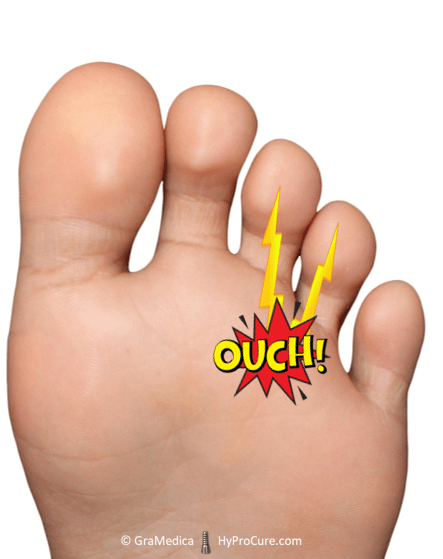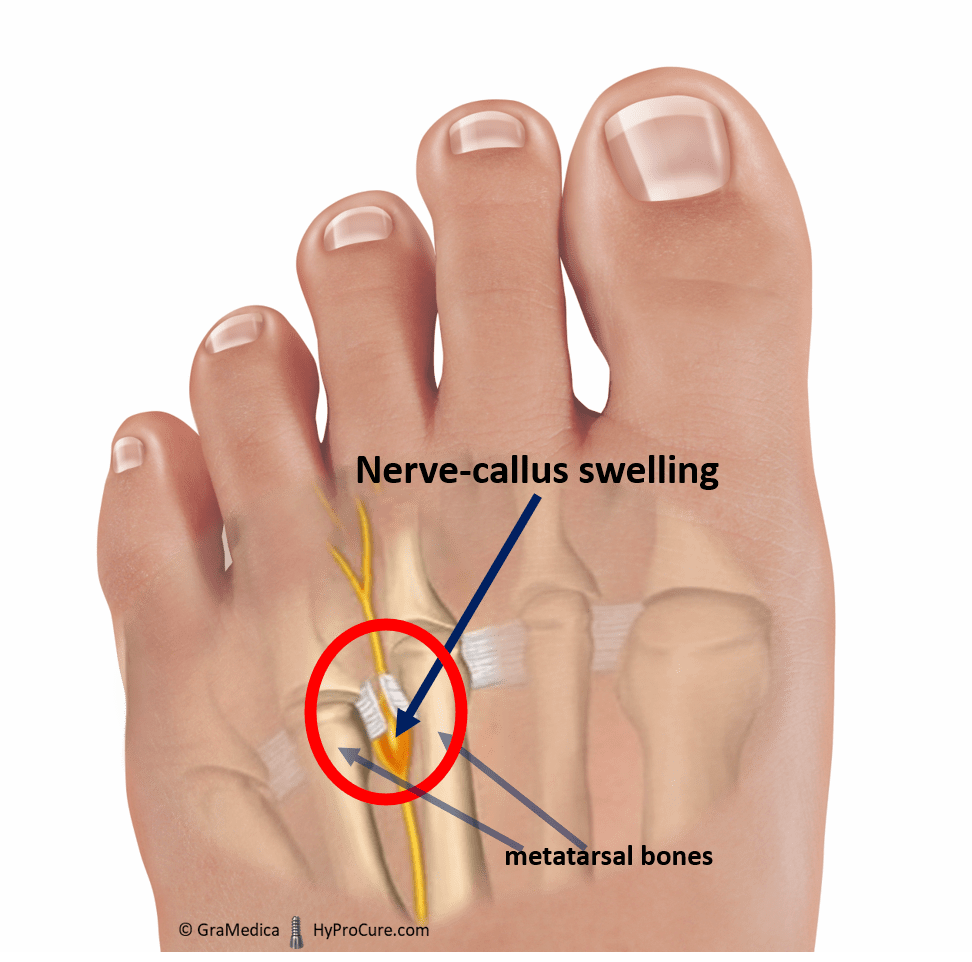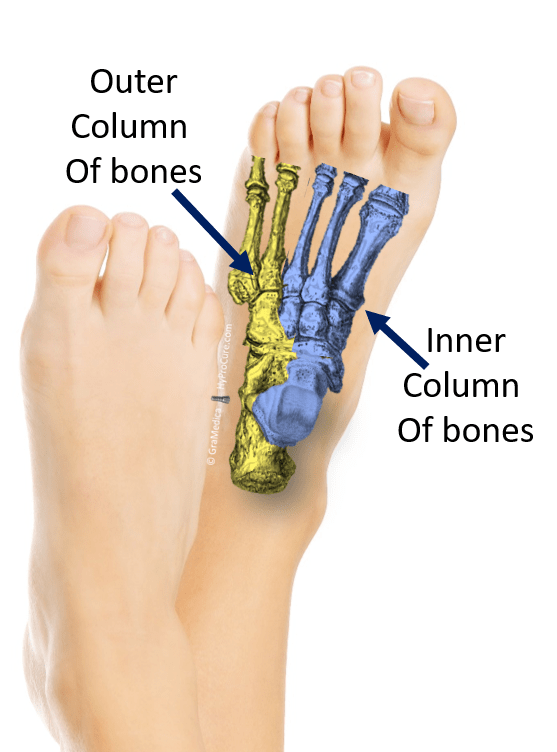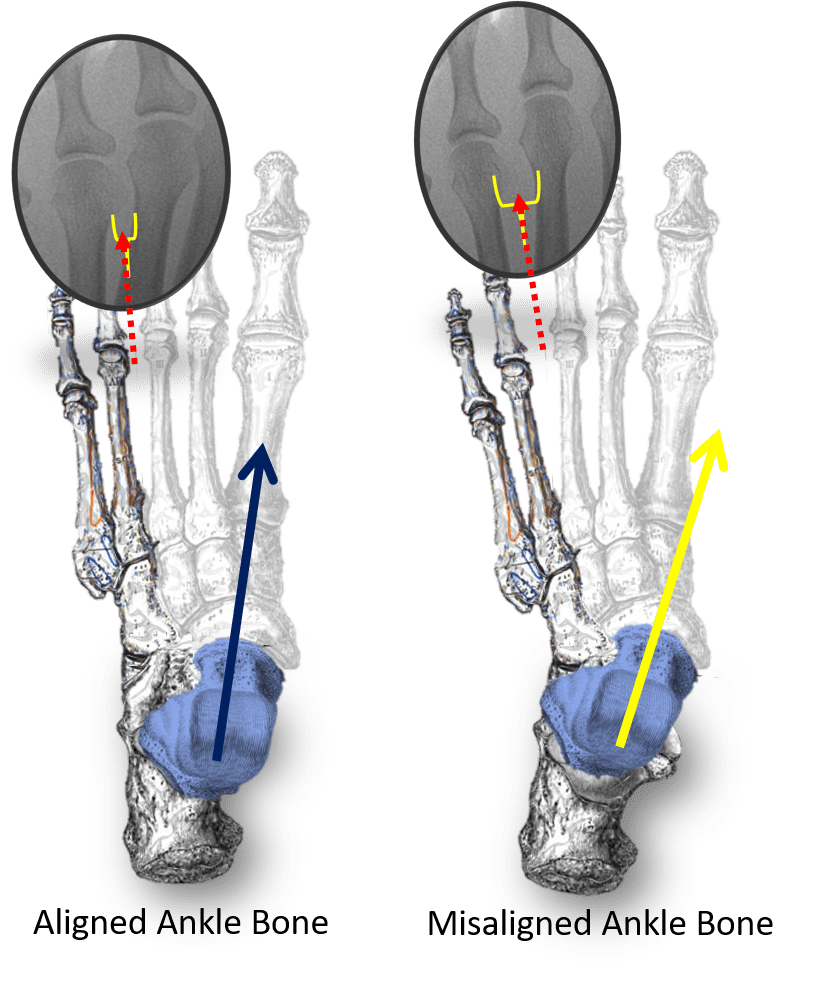Metatarsalgia/Morton’s neuroma/Intermetatarsal Neuropathy
Why do people get nerve-calluses?
An online search for the cause of nerve callus formation is pretty generic. They claim it’s from wearing tight shoes, running, high arched feet, and low arched feet. There is an underlying condition that is seen in the majority of people with nerve calluses which has to do with ankle bone instability. A stable ankle bone on the heel bone means a stable foot structure. A partially dislocating ankle bone on the heel bone leads to excessive forefoot motion. Let’s take a closer look. The bones of the foot are divided into 2 columns, the inner/medial and outer/lateral. The inner column of bones is allowed to have a slight amount of motion. The outer column of bones should have little to no motion. That slight amount of motion between the inner and outer columns allows the foot to handle an uneven ground surface. Ankle bone instability, the partial dislocation of the ankle bone in the heel bones leads to excessive inner column motion. So, what does all of this have to do with forming a nerve callus? Everything. Where do we see the most common location of the nerve callus? Between the 3rd and 4th metatarsal bone. This is between the inner and outer columns of foot bones.Ankle bone instability pushes the inner column of foot bones away from the outer column of bones. The excessive motion, even a slight amount, is going to put a strain on the ligaments between the heads/necks of the 3rd and 4th metatarsal bone. That strain is the micro-trauma that is inflicted on the nerve. That strain happens with every step taken and constantly when standing. That’s thousands of times per day.





